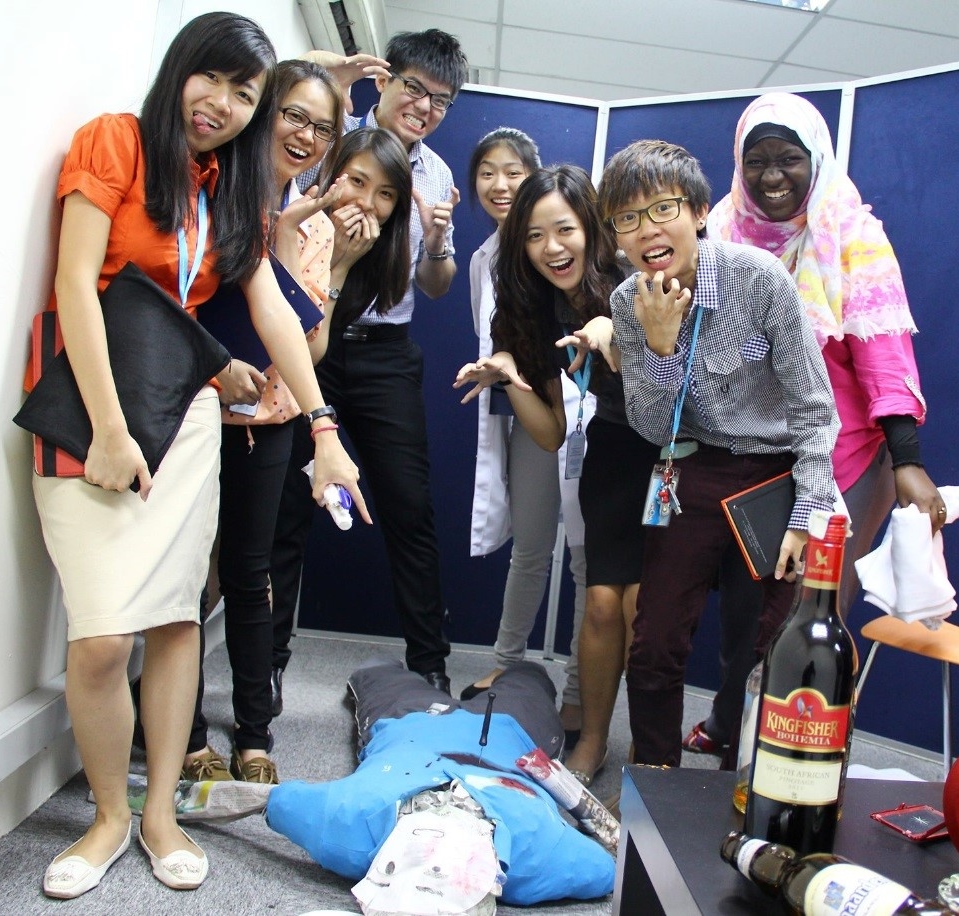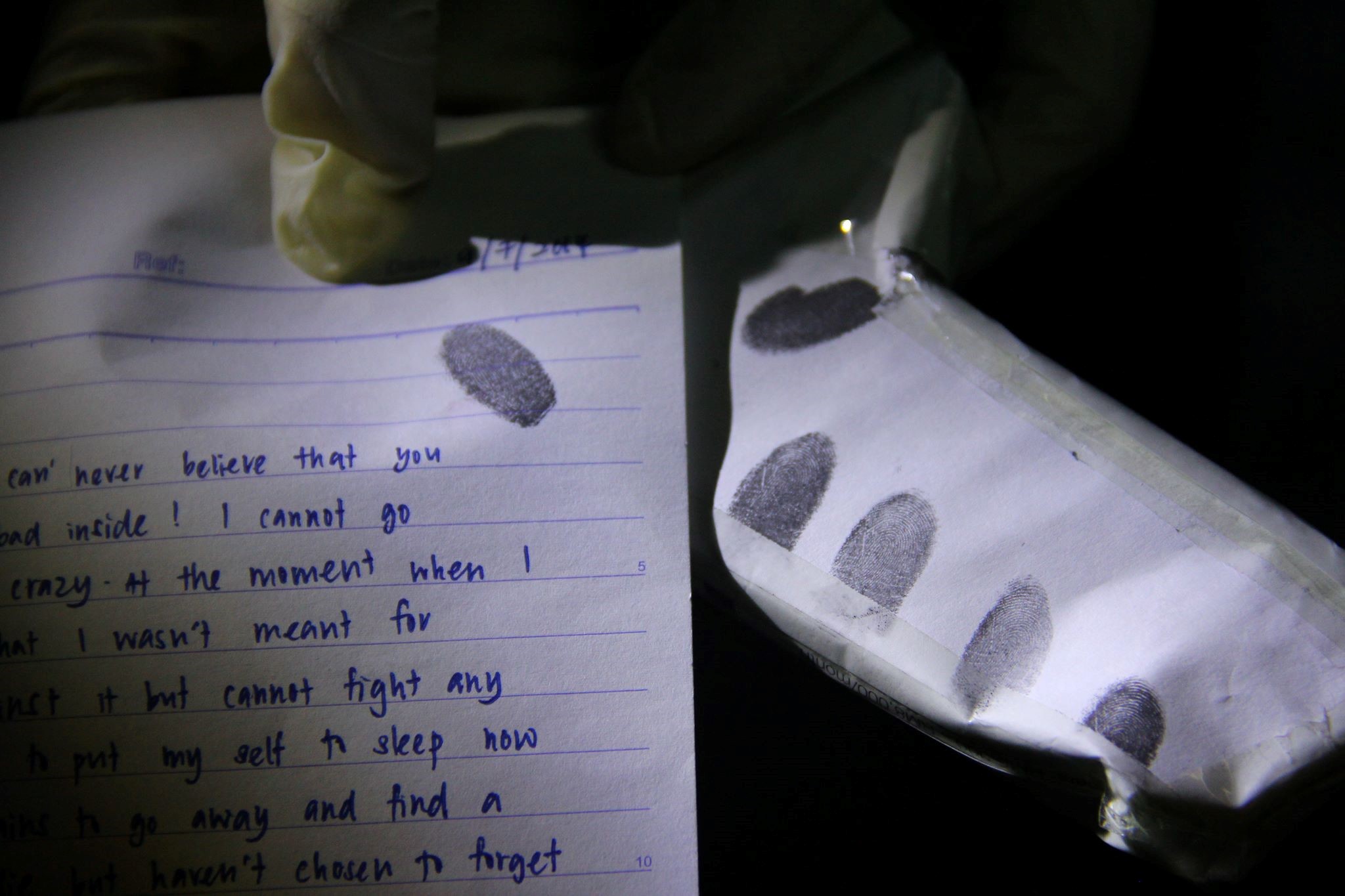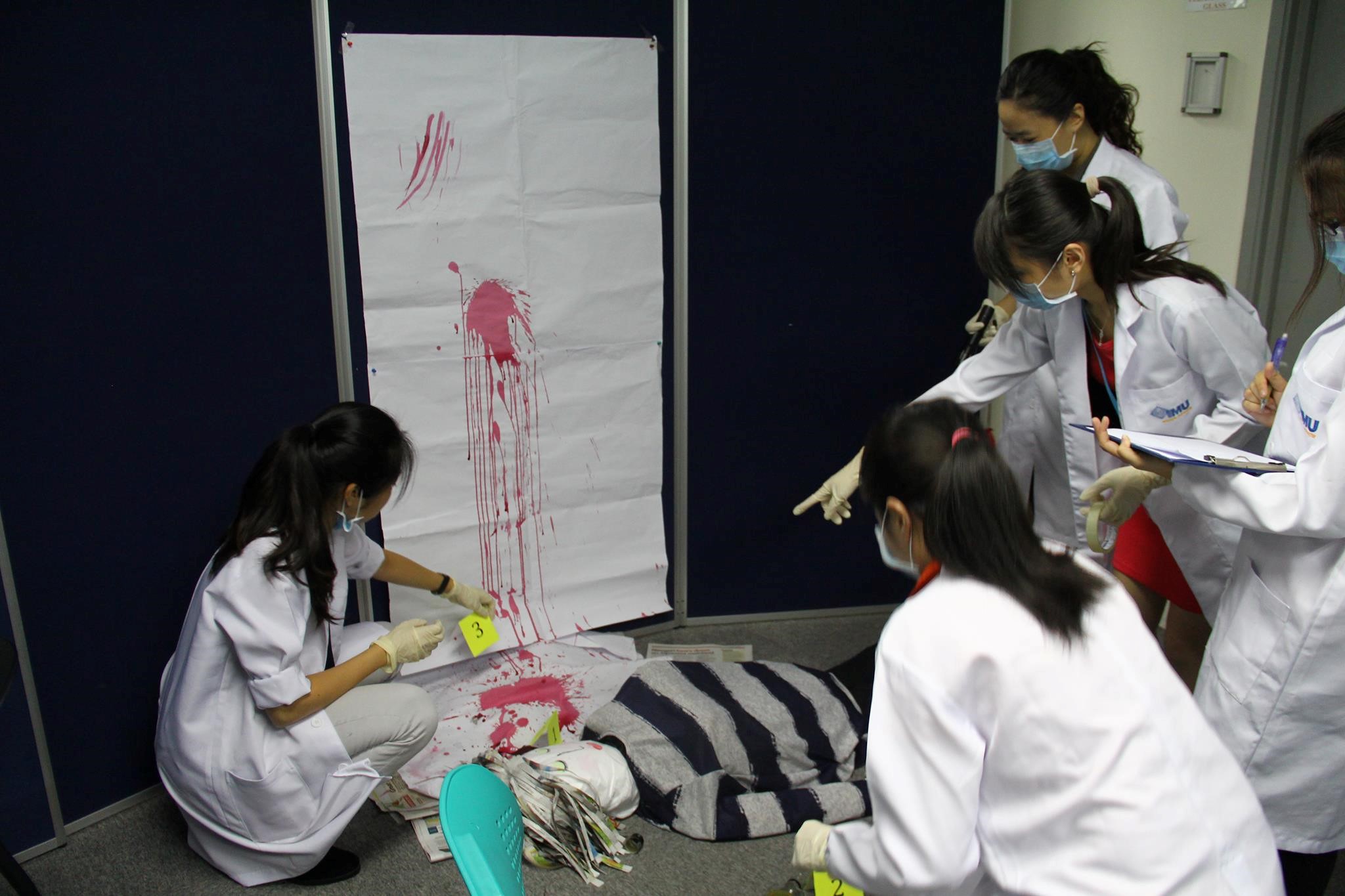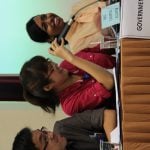16 July 2014 – Semester 5 Biomedical Science students at the International Medical University (IMU) participated in an exciting activity (Crime Scene Investigation) as part of their Forensic Science and Pathology module. The activity, which complements their lectures, was aimed at enhancing the students’ ability to work in a team for the construction and analysis of a simulated crime scene, and to identify relevant physical evidence for collection. 
 Each group of students was tasked at creating a complex crime scene several weeks before the session. Using simple everyday objects as props, participants relied on imagination and innovation to generate a sense of realism. Once the set-up was prepared, the groups switched scenes and examined each other’s case (using techniques learnt in the module) to present a hypothetical inference on the crime.
Each group of students was tasked at creating a complex crime scene several weeks before the session. Using simple everyday objects as props, participants relied on imagination and innovation to generate a sense of realism. Once the set-up was prepared, the groups switched scenes and examined each other’s case (using techniques learnt in the module) to present a hypothetical inference on the crime.
Throughout the planning and execution of the activity, teamwork was clearly evident as participants dutifully played their respective roles to achieve a common goal. The ‘investigators’ took photographs and sketched the scene, carefully collected physical evidence, and even examined fingerprints to piece the story together. With students armed with torchlights, gloves, masks, forceps, and serious demeanours, spectators could have mistaken it for a real investigation after all. The activity resulted in animated discussions interrupted by bursts of laughter. The groups then revealed their fictional criminal plots to one another. Dr Vasudeva, our forensic pathologist who designed the activity, then summarised the learning outcomes by sharing reports of actual cases and the ‘perfect murder’.
It was no surprise that the students enjoyed the activity and found that it heightened their interest in the module. They ended the session with a sense of achievement from their gallant efforts, and an acknowledgement that learning can be fun.
This article is written by a biomedical science lecturer, Dr Lim Chooi Ling.









